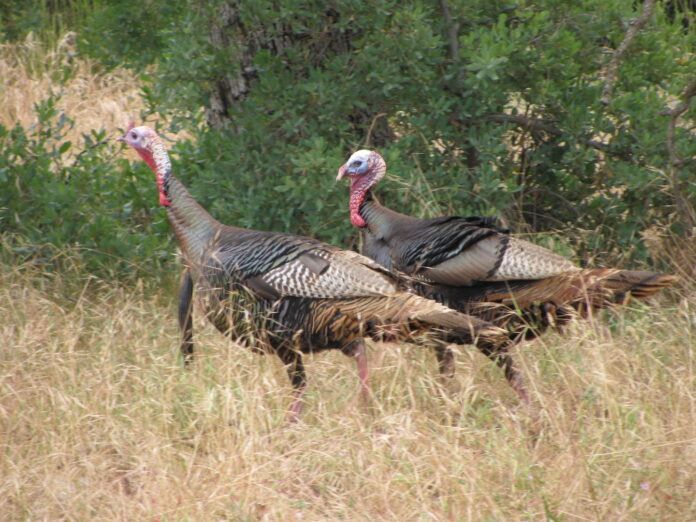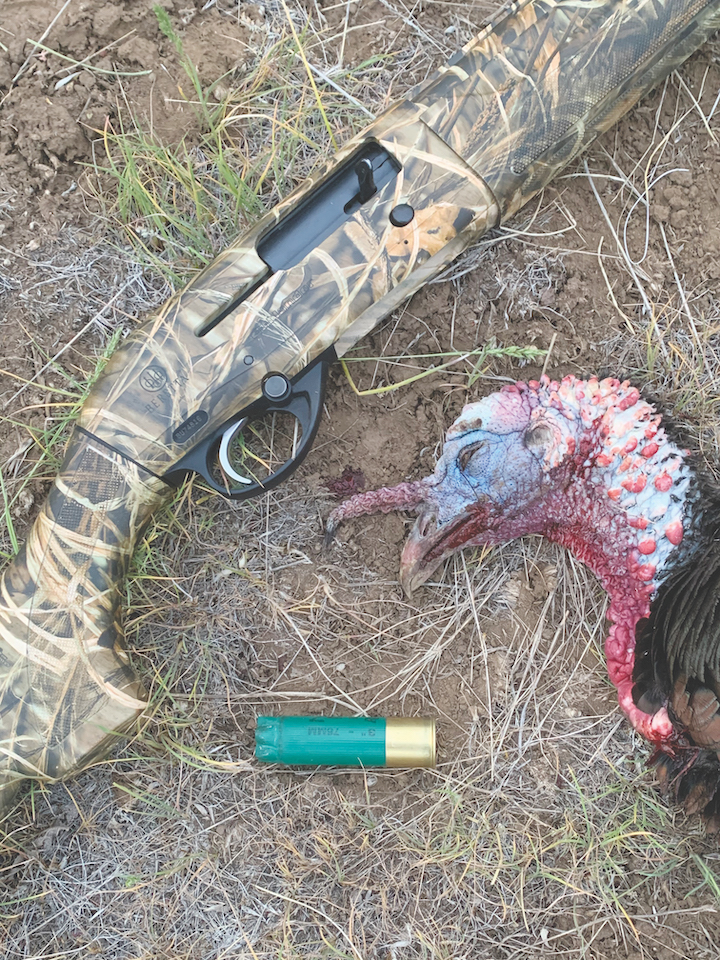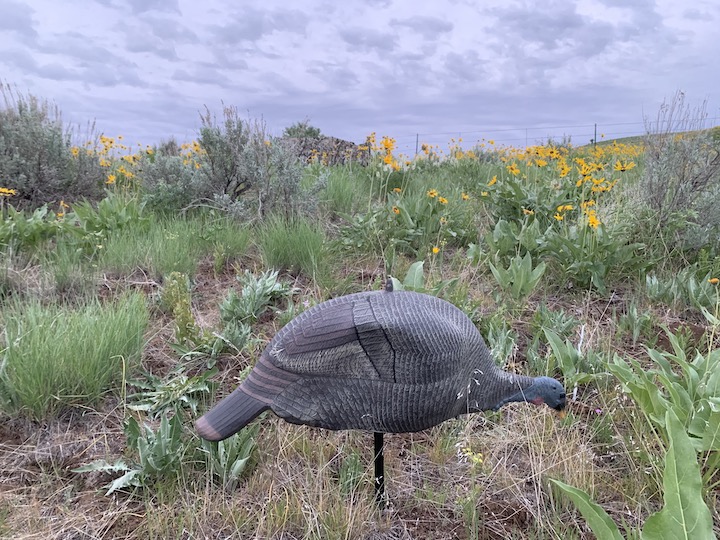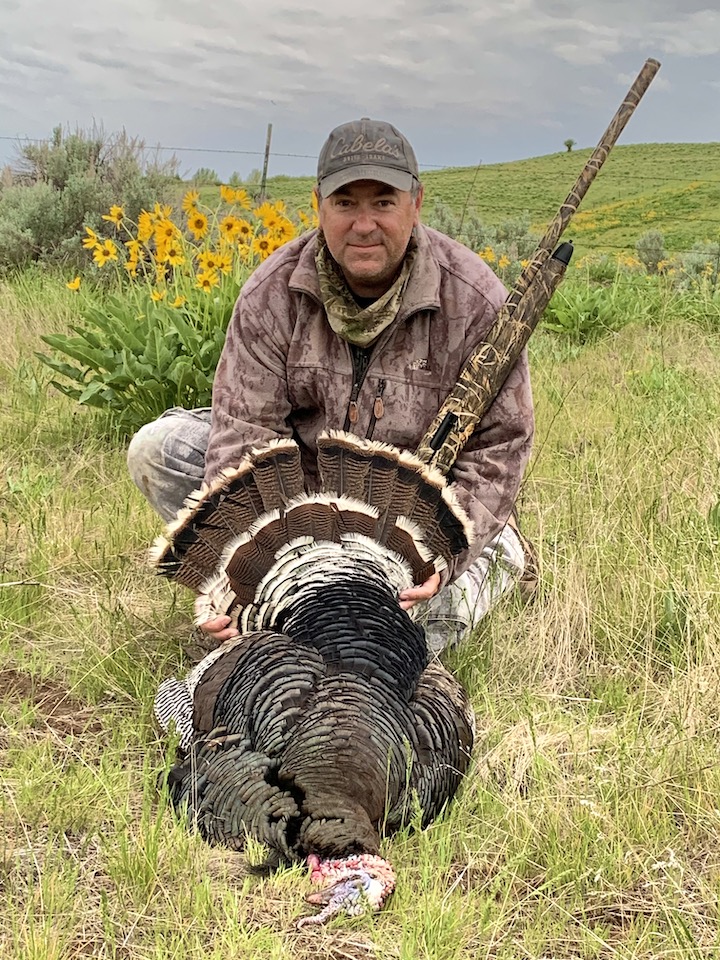
By Tim E. Hovey
As we ease into March, the one bright spot on the immediate horizon for hunters, is the spring turkey season here in California. The general season runs from March 30 through May 5, and you are allowed one beard turkey per day, and three per the short season. Wild turkeys can be found from sea level to about 3,000 feet in elevation, and they are present in 54 of the 58 California counties.
Every turkey season, I make sure I get out a few weeks before the opener to see if I can locate groups of birds. In all the hunting I do, I know that scouting for turkey before the season is very important to turkey hunting success. In fact, I have never killed a turkey during the season, without first doing my share of scouting in the area beforehand.
Even though I have a handful of good spots, I still head out to look for turkey sign. I’ll travel old Forest Service roads on public land, looking for turkey tracks and scat. If after a few hours of hiking, I don’t see any presence of birds, I’ll move on to another location.

When I do encounter tracks and scat, I take my time and determine how old the turkey sign is. If the tracks are old and the scat dried up, this only tells me that birds have moved through the area and probably aren’t holding in this location.
If I find fresh sign, I move through the area quietly. I don’t ever use a turkey call when I’m scouting. I want to move through the area without detection and simply observe. If I can, I will try and find a roosting tree in the area. These will be relatively large trees with sturdy and straight branches. If these trees are regularly used, they’ll be littered with droppings and turkey feathers around the trunk.
Once I’ve located a spot I want to hunt on the opener, I’ll start to look for a spot where I can set up and call from. Spring male turkeys are looking for love and can be located and called in with a variety of hen purrs or clucks. I like to sit in the shadows, with my back up against a tree, so I have an unobstructed view of my calling area out front.

Wild turkey have amazing vision, so camo, head to toe is a must. I also wear a face mask to make sure I’m almost completely hidden. Once I find a spot, I’ll clear out any debris, making my sitting area flat and comfortable. A seating pad or small chair is also a great idea for keeping comfortable and still.
To top off the set up, I’ll place a hen decoy about 15-yards from where I’ll be sitting. Behind her, and looking right at her, I’ll place a jake decoy. In this love-soaked spring scenario, the jake, a juvenile male with no real breeding prospects, will be the most hated plastic bird out there, when a mature tom enters the scene. Calling or not, once a tom turkey sees this decoy set up, he’ll come running. And his first order of business will be to beat down the jake.
I’ve used this decoy set up for decades, and it has always gotten the job done. I’ve also used the same, cheap decoys when turkey hunting. I can’t remember where I got them, but I paid $12.99 for the pair, and I don’t plan to change them.
As far as calling, I think the less noise made the better. I’ve been hunting with guys that just plan wear their slate calls out. They’ll call every few minutes and, in my opinion, that won’t up your odds. Once I reach my set up, usually before light, I’ll get comfortable and wait for shooting time. If I’ve located roosted birds and they’re still in the tree, I’ll send out one subtle hen purr and nothing else.
The cool, early morning air will carry that call sound further than you think. If I don’t hear or see any action after an hour, I’ll send out another hen purr and maybe a couple clucks, but not much more than that unless I see birds. You really don’t need to call constantly to get the attention of lovesick tom turkeys.
A 2021 hunt was a good example of this. We had located a roost tree and had put the flock of twenty turkeys to bed the day before. An hour before daybreak, the following morning we split up and set up 100-yards apart in different areas. At shooting time, my buddy started calling. I remained silent. For forty-five minutes my buddy let his slate call sing. He sounded good, but I felt like he was over calling.
As the sun peaked over the horizon, the birds started to stir. The first bird left the tree and flew my way, landing 15-yards from my hen and jake decoy set up. Thirty seconds later the entire group lifted off the roost tree and landed near the first bird. I picked out the closest tom and dropped him with one shot. I filled that turkey tag without ever making a sound.
Hunting turkeys will test your hunting skills. They will spot any slight movement on your part from a hundred yards away. If your decoy set up doesn’t look right, they won’t approach. Chances are, you will only get one chance at an approaching group, so make your shot count. As a buddy once told me, “They are the smartest dumbest birds you’ll ever hunt!” He wasn’t wrong.




